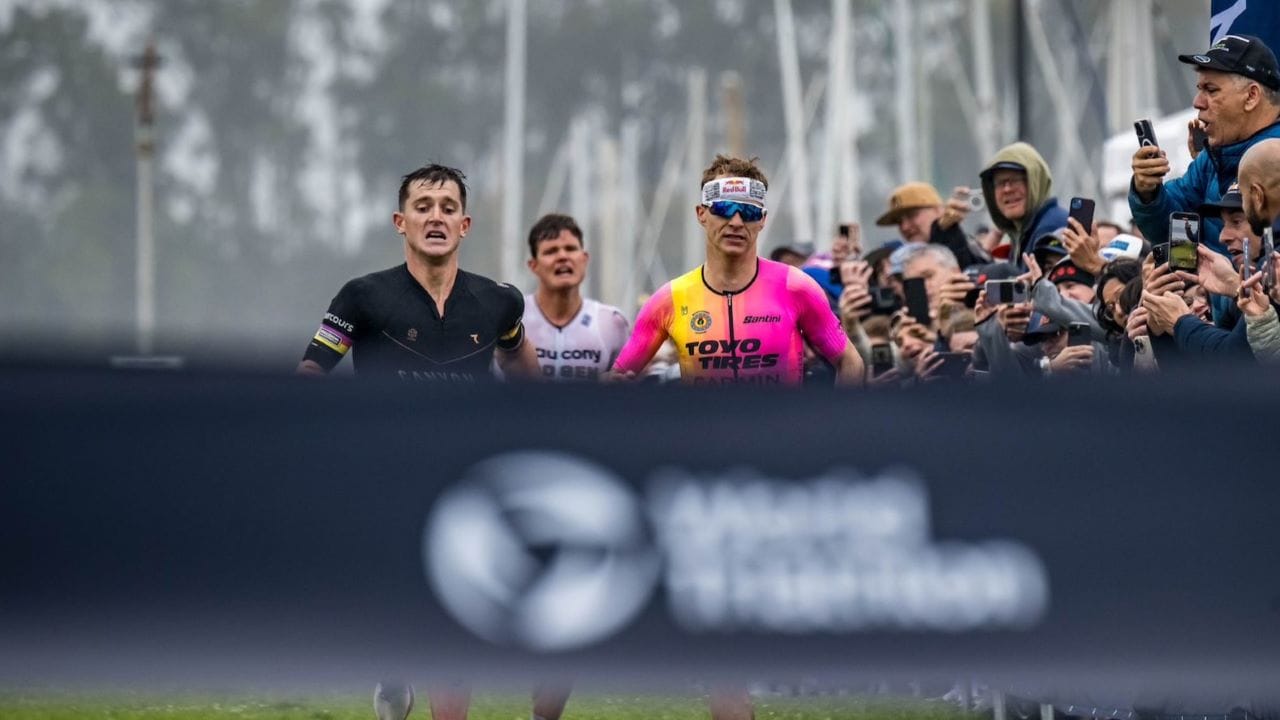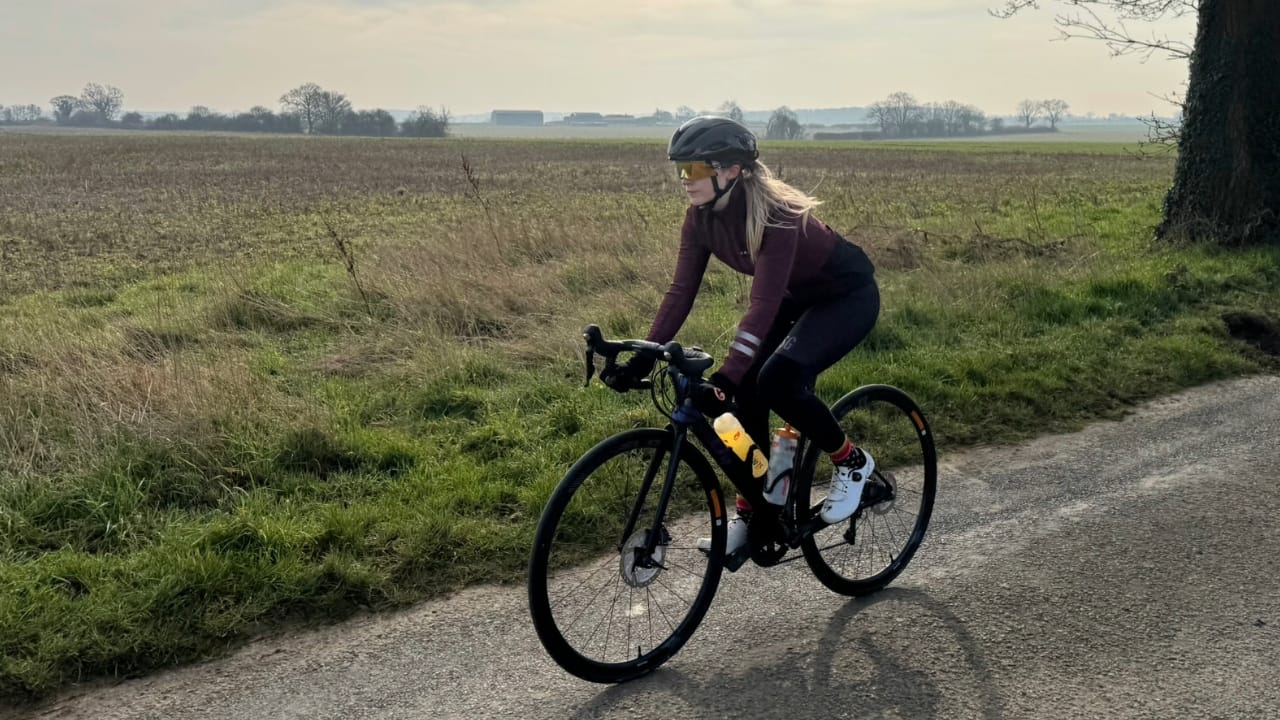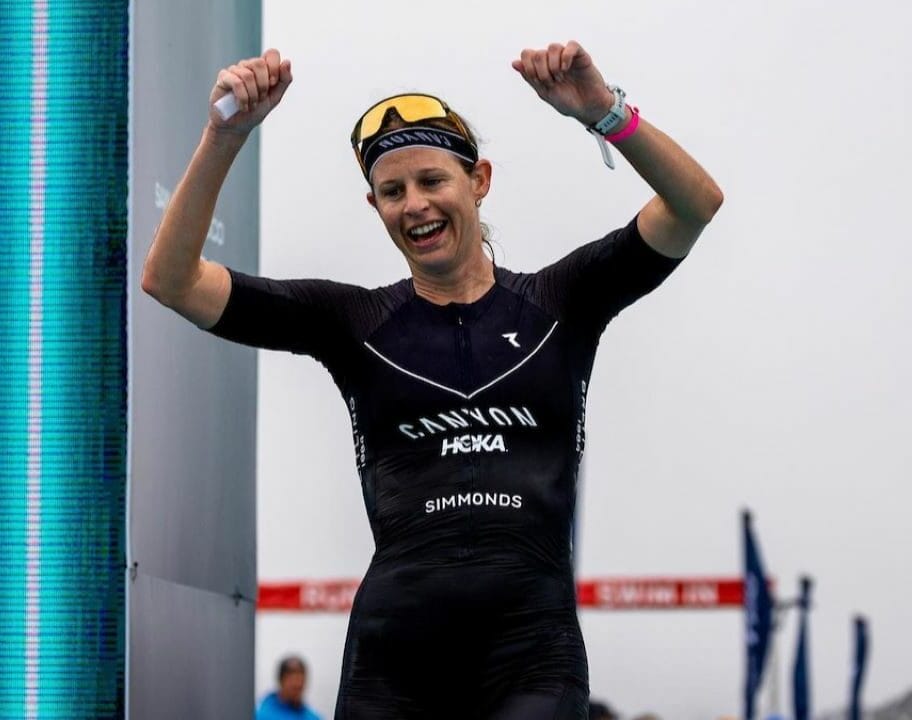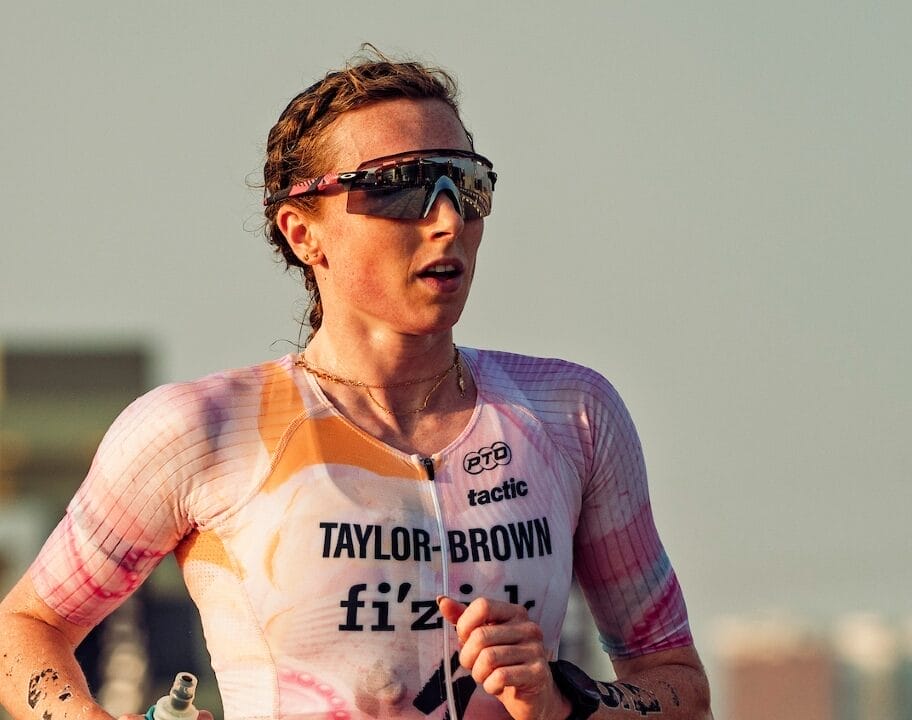You probably know that interval training has the potential to make you a faster triathlete. But with so many different types of interval workouts to choose from across all three triathlon disciplines, knowing what sessions to do to actually lower your race time isn’t easy.
Add in different triathlon distances to train for, varying fitness levels and individual strengths, weaknesses and goals – and picking the right workouts to achieve your ambitions gets even more complicated.
To help you make sure your tough training hours are actually going to benefit your race times, we spoke to two triathlon coaches and exercise physiologists, Dr Michael Rosenblat and Dr Guido Vroemen, to share their insights on the best intervals for triathlon training – and how to execute them.
Why are intervals important for triathletes?
Many triathletes fall into a ‘middle-intensity trap’ of spending a lot of time at race pace, just below their threshold speed or power. By doing so they hope to become more efficient so they can hold an ever higher percentage of threshold while it stays at the same level. But this could be a mistake if you want to get faster.
Vroemen says: “Don’t try to keep it [threshold] there and make yourself more efficient so you can increase your speed to that limit.”

Once you can sustain 90-92% of your threshold, for example, your speed will plateau.
“If you’re at that level, there’s only one thing you can do,” he adds.”You have to increase the ceiling by doing VO2 max training.”
Besides VO2 max intervals, we’ll also look at the role lower and higher intensity intervals can play in triathlon training.
Which are the best intervals for triathletes?
It won’t come as a surprise that there’s no ‘silver bullet’ interval that will boost the race performance of every triathlete.
“In my opinion there is no such thing as the most effective intervals for every triathlete,” says Vroemen.
There’s not a wonder interval for each race distance either.
“What you should focus on is the physiological adaptation that you’re looking to achieve,” says Rosenblat, a physiotherapist and coach at Evidence-Based Coaching.
Match the demands of your event to your intervals
So instead of doing just one kind of interval for a given race distance, you have to do a variety to receive the desired adaptations. These depend on the energy system we need to develop, according to Vroemen, of which we have three.
1: Sprint system: this uses adenosine triphosphate (ATP – the molecule that powers muscle contraction) very fast for about 10 seconds
2: Lactate system: this can produce ATP fast with the production of lactate from glucose along with pyruvate
3: Oxygen system: this produces ATP at a lower velocity than the lactate system. It can use either glucose oxidation or fat oxidation to produce ATP

It’s worth noting that these systems cross over and you almost never produce energy from one kind of oxidation.
Identifying strengths and weaknesses
Vroemen, the medical doctor of the Dutch Triathlon Federation, adds: “Not every triathlete is equally well developed in these systems.”
If you’ve got good endurance, but struggle to kick on in a race, that’s a sign your oxygen system is stronger than your lactate system. If you’re fast over shorter distances and explosive up climbs, but your pacing seems lets you down in longer courses, you probably need to focus on your oxygen system.
Due to genetics everyone will have areas they struggle to develop. For example, your muscle fibre types can make or break your sprint finish.
“Maybe take them as a loss and make your strengths even better,” says Vroemen. “But most of the time, you can improve your weaknesses.”
Across these three systems, the key improvements you should target are oxygen uptake (VO2 max), lactate shuttling and efficiency.
“In longer races, the oxygen system is more important, but if you can also use the lactate system in a steady state it helps you to improve performance and speed,” adds Vroemen.
“Also a higher oxygen uptake can help you to increase performance.
“Increased efficiency means that with equal oxygen uptake or metabolic power you can improve mechanical power.”
In general, efficiency is more important over longer distances, but you shouldn’t neglect VO2 max.
“So if you want to race faster then you have to increase the ceiling of the oxygen uptake and also improve the efficiency at race speed,” he adds.
In shorter triathlons like Olympic and sprint, he says: “The ability to use the lactate system better increases speed.”
Targeting energy systems with intervals
To develop these systems, you have many intensities and durations at your disposal.
Triathletes can probably discount the sprint system because it’s irrelevant to the distance and intensity of their races.

“A sprint triathlon isn’t a real sprint,” says Vroemen.”The most important thing there is oxygen uptake.”
That said, he believes that many triathletes neglect their lactate system which “can help to improve your speed because it’s an add-on to your oxygen system.”
Lactate system intervals
Vroemen recommends doing some “aggressive intervals” at well above threshold power to improve your lactate and oxygen system at once.
“Lactate is built up and then it’s used again to make new energy and the oxygen system helps with that,” he adds.
In this example bike session, he recommends working off Critical Power (CP) or Functional Threshold Power:
- 5 x 60 seconds at 150% CP / FTP with 30 seconds recovery
For a triathlete, with a CP of 300 watts, the 60 seconds is done at 450 watts.
Eventually the athlete would build up to repeating this block once or twice after 15 minutes of easy riding between each
In a race scenario, these anaerobic capacity intervals will help you sprint over a short climb in the big ring rather than switching to a smaller gear.
He says: “The ones that have anaerobic capacity can just hammer it because they can recover from it and that helps your speed.”
Oxygen system intervals
VO2 max intervals are not as intense and are performed for a longer total. Again, generally on the bike.
For athletes with a high anaerobic capacity, ie a good punch, he suggests:
- 6-8 x 60 seconds at 120% CP/FTP with 30 seconds recovery
For athletes who have a stronger aerobic system he recommends doing between three and five minute-intervals at that intensity.
The idea of this structure is that the pauses give your muscles a break while your ventilation and heart rate are high, indicating your oxygen consumption is elevated.
Provided you are well trained, Rosenblat favours slightly longer intervals to maximise time spent at VO2 max during the intervals.
Rosenblat says: “It may be more beneficial to do longer duration intervals due to the type of stress that it may place on the cardiac system.
“That’ll end up leading to not only greater cardiac output, but oxygen delivery as well.
“Whereas if you’re doing shorter intervals, the type of stress that you’re placing is going to affect more of the periphery.”
He suggests a six-minute work period on the bike. This length gives you a beneficial amount of time working at a peak rate of oxygen consumption.
However, less experienced triathletes don’t need to worry so much about the interval structure. “If you’re not really trained, just causing some sort of stress will probably be sufficient to improve,” he adds.
Efficiency intervals
To improve their ability to recycle lactate and become more efficient, the same athlete with a 300W CP would do:
- 270W (90% CP) for 5 minutes
- 240W (80% CP) for 5 minutes
- Repeat this block twice for a total of 30 minutes

A similar session can be done running with a Stryd power meter or by using speed on the track, involving two minutes at threshold power / pace followed by two-three minutes easy repeated five times.
Due to the injury risk, Vroemen does not recommend doing run intervals at above 120% threshold.
“But hill sprints or stairs climbing are really good training for short anaerobic intervals,” he adds.
Planning intervals
Intervals are effective only when performed in the right quantity: doing too many will accumulate excessive fatigue.
Both coaches recommend only doing one ‘hard’ VO2 max workout a week and doing one or two more lower intensity interval sessions, such as a threshold session or a race-pace effort.

Rosenblat generally recommends picking either running or cycling as your weekly speedwork focus and alternating weekly.
Vroemen rarely sets hard swim intervals for his athletes. “I don’t concentrate that much on the anaerobic system [in the pool],” he says.
“Swimming is a much more technical sport, so technique is far more important than this. I do some critical swim speed sessions, maybe a little bit above, but not often sprint sessions.”
He explains that your speed in the swim is the most stable of all three legs, negating the need to do intervals to develop acceleration.
He adds: “It’s not like cycling where you have hills and then you have to increase your power. Swimming is an almost identical speed during the 3.8km or 1.9km.
“Of course, in the top of the field, there are some surges when they go really fast. But for most triathletes, they just swim one tempo.”
So to swim faster, Vroemen advises you to prioritise technique. He also underlines that fitness isn’t the only way to run and ride faster. Equipment choices (for example, running shoes or an aero helmet) make a big difference as does positioning on the bike.
“1% is also a gain”
When you begin interval training, you’ll likely see big improvements in threshold speed or power and VO2 max.
As you get fitter the rate of these gains diminishes until they become very hard won. That’s not a reason to stop trying to improve in these areas to get faster though.
“1% is also a gain,” says Vroemen. “It doesn’t sound very much, but if you do an Ironman in eight hours, that’s 480 minutes, 1 % is 4.8 minutes. So that’s almost five minutes. So that’s a lot.”











